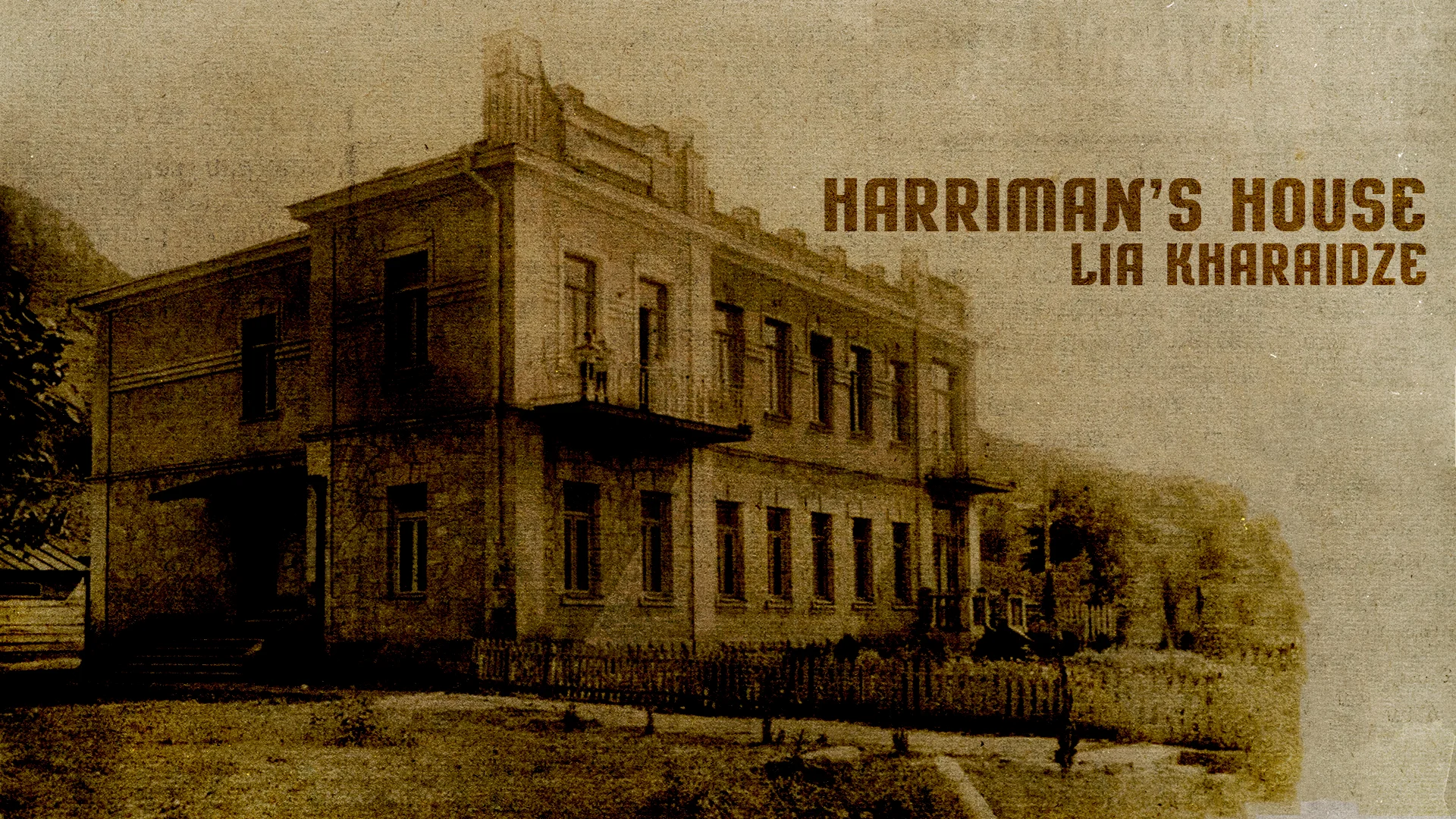Harriman’s House
Lia Kharaidze
At the beginning of the last century, Chiatura was a small village with only a fewhouseholds. It consisted mainly of wooden barracks, taverns, and blacksmith shopsscattered along both sides of the Kvirila River. The village also had a railway station anda market. The area where today’s densely populated Agmashenebeli Street is locatedwas completely uninhabited at the time. It’s hard to imagine now, but this elevated areawas once covered with an oak forest, with a cemetery to the south. On the plain,stretching all the way to the railway station, a walnut tree alley ran along the street thatnow bears the name of I. Chavchavadze.
The city grew rapidly as manganese mining gained momentum, attracting a largenumber of fortune seekers to this once – quiet town. After the establishment of Sovietpower, the management of Chiatura’s manganese ore was handed over to Averell Harriman.
However, the Harrimans’ connection to Chiatura began even earlier. Averell’s father,Edward Harriman, had also visited the town. Edward was a fascinating figure, and manyauthors have written about him. Born into a poor clergyman’s family, he started workingas a courier on Wall Street at the age of 14. Over time, he became an influentialmillionaire. After Edward’s death, his empire expanded even further. While EdwardHarriman financed individual political figures, his son, Averell Harriman, activelyparticipated in politics himself and dreamed of one day reaching the White House.During Franklin Delano Roosevelt’s presidency, William Averell Harriman held severalhigh-ranking positions. He served as the U.S. ambassador to the Soviet Union andGreat Britain, Secretary of the Treasury, advisor to President Truman, Governor of NewYork State, and special envoy to President John F. Kennedy. He played a key role ininternational negotiations, including the Tehran, Yalta, and Potsdam conferences.Harriman was deeply involved in U.S. foreign policy during World War II and the ColdWar. Some believed that the only reason he never made it to the White House aspresident was because he was considered “too liberal.” In 1963, Harriman played asignificant role in drafting the Moscow Treaty, which partially banned nuclear tests. In1968, he led the American delegation in Paris to negotiate peace in Vietnam.
Averell Harriman is considered one of the first foreign investors in Georgia. In July 1925,Harriman and Company were granted a 20-year concession to manage the Chiaturamines. However, due to difficulties in their relationship with the Soviet authorities,Harriman decided to terminate the agreement. In 1926, he held a four-hour meeting withLeon Trotsky, the chairman of the concession commission, after which the concessionwas dissolved.
Here, I’d like to share an interesting anecdote about Harriman, recounted by Ms. MarinaBuzukashvili: “It’s worth noting that the Chiatura manganese deposits were once ownedby the American entrepreneur Harriman. Before the Soviet era, my grandfather was hisbusiness partner. This entrepreneur was Averell Harriman’s father. My father often toldme a funny story: After completing his diplomatic mission, Averell Harriman went to the Kremlin to bid farewell to Stalin. Beria was also present at the meeting. During the politeconversation, Stalin suddenly turned to Beria and said in Georgian, ‘We barely got rid ofthis scoundrel!’ As Harriman was leaving, he turned to his hosts and said in perfectGeorgian, ‘Well, may you all be happy and well,’ before walking out the door. Stalin,embarrassed by Harriman’s response, had a stern word for Beria: ‘How could the chiefof Soviet security not know that Harriman speaks Georgian?’ The truth was that duringhis father’s business ventures in Chiatura, young Averell had learned Georgian fluentlywhile playing with local children.
Harriman’s time in Chiatura was brief, but he left an indelible mark on the city.Fortunately, the house where he lived and worked still stands. Built around 1925, thetwo-story house is made of polished, decoratively carved stone and remains an eye-catching structure to this day. The mosaic floor in the entrance hall and the torch-inspired stair railing decorations have survived. The residents have also preserved thefireplace, a beautiful work of art still referred to as “Harriman’s fireplace.” WhenHarriman left Chiatura, he reportedly said, “I don’t know how life in Chiatura will turn out,but even the bridges here should have golden railings.”The house seems to have been blessed with good fortune. After Harriman’s departure,it was occupied by doctors invited to work at the newly opened hospital. From then on,the “Harriman House” became known as the “Doctors’ House,” a name it still carriestoday.
The walls of this house have witnessed countless remarkable individuals—bothresidents and guests. Among them was Irakli Paghava, known as the “Doctor onHorseback,” who founded the children’s department in Chiatura. Although he lived in thecity for only 12 years, he earned the deep affection of the locals. Another notableresident was Ioseb (Soso) Kurtskhalia, a military doctor who served in Iran during WorldWar II. Upon returning to Chiatura, he established a feldscher’s college to train nurses.His wife, Leticia Gogsadze, was also a doctor, and their children followed in theirfootsteps. The family was highly respected and loved in the city.
Simon Zhgenti, an exceptional doctor known for his infallible diagnoses (locals said “nowater could pass through” his assessments, meaning they were 100% accurate), alsolived here. He was remembered not only for his medical expertise but also for his greatsense of humor. Another resident was Aleksandre Tsereteli, a phthisiologist who wasone of the pioneers in this field in Georgia. He laid the foundation for the development ofphthisiology in the country. Locals recalled that if a patient couldn’t afford medicine,Tsereteli would buy it for them himself.
If these walls could talk, they would tell countless fascinating stories about theirremarkable inhabitants. It’s impossible not to recall the lines of the great poet whenlooking at this house: “You are a martyr of many times, but you are speechless
